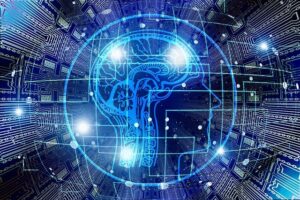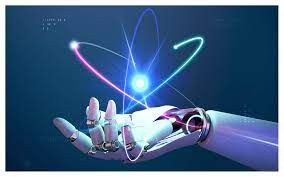The Importance of Image Dataset in Machine Learning: A Comprehensive Guide

Introduction to machine learning and image dataset
Machine learning has revolutionized various industries by enabling computers to learn from data and make intelligent decisions. One crucial aspect of machine learning is the availability of high-quality datasets. An image dataset plays a vital role in training machine learning models for tasks such as image recognition, object detection, and image segmentation. In this comprehensive guide, we will explore the importance of image datasets in machine learning and provide insights into building, managing, and evaluating these datasets.
What is an image dataset in machine learning?
An image dataset is a collection of images that are used to train machine learning models. It serves as the input data for algorithms, allowing them to learn patterns, features, and relationships within the images. Image datasets can range from a few hundred to millions of images, capturing different objects, scenes, or concepts. These datasets are annotated with labels or annotations, providing ground truth information for training and evaluation.
Why is an image dataset important in machine learning?
An image dataset is crucial in machine learning for several reasons. Firstly, it provides the raw material for training models to recognize and understand visual information. By exposing the models to a diverse range of images, they can learn to generalize and make accurate predictions on unseen data. Secondly, an image dataset helps in overcoming the limitations of handcrafted features. Instead of relying on predefined features, machine learning models can learn to extract relevant features directly from the images, leading to better performance and more robust models. Lastly, an image dataset allows for benchmarking and comparison of different models and algorithms, enabling researchers and practitioners to measure progress and identify areas for improvement.
How image datasets are used in machine learning algorithms
Machine learning algorithms rely on image datasets to learn patterns and make predictions. The process typically involves several steps. First, the dataset is split into training and testing sets. The training set is used to train the model, while the testing set is used to evaluate its performance on unseen data. During training, the model learns to map the input images to their corresponding labels or annotations. This process involves adjusting the model’s parameters based on the differences between its predictions and the ground truth labels. Once the model is trained, it can be deployed to make predictions on new, unseen images.
Challenges in creating and managing image datasets
Creating and managing image datasets can be a challenging task. One of the main challenges is obtaining a large and diverse collection of images. Collecting and annotating images manually can be time-consuming and costly. Additionally, ensuring the quality and accuracy of annotations is crucial for training reliable models. Another challenge is managing the storage and organization of large image datasets. As the number of images increases, efficient storage and retrieval become essential for seamless training and evaluation. Finally, maintaining the consistency and compatibility of image datasets across different projects and platforms can be a complex task, requiring careful version control and documentation.
Types of image datasets
Image datasets can be categorized into various types based on their characteristics and intended use. Some common types include:
General Image Datasets: These datasets contain a wide variety of images capturing different objects, scenes, and concepts. They are often used for general-purpose image recognition tasks and benchmarking.
Domain-Specific Image Datasets: These datasets focus on specific domains or applications, such as medical imaging, satellite imagery, or self-driving cars. They are tailored to the requirements and challenges of the respective domains.
Fine-Grained Image Datasets: Fine-grained image datasets consist of images that require detailed discrimination between similar classes or subclasses. They are commonly used for tasks such as species classification or product recognition.
Synthetic Image Datasets: Synthetic image datasets are artificially generated using computer graphics techniques. They are useful for scenarios where real-world data is scarce or difficult to collect.

Commonly used image dataset libraries and resources
To facilitate the creation and usage of image datasets, several libraries and resources are available. These tools provide access to pre-existing datasets, annotation tools, and utilities for data preprocessing. Some commonly used libraries and resources include:
ImageNet: ImageNet is a widely used dataset containing millions of labeled images. It has been instrumental in the development of deep learning models for image classification and object detection.
COCO: Common Objects in Context (COCO) is a large-scale dataset that provides images with object annotations. It is commonly used for tasks related to object detection, segmentation, and captioning.
OpenImages: OpenImages is a dataset that contains millions of images with labeled objects. It covers a wide range of object categories and provides a diverse set of images for training and evaluation.
Labelbox: Labelbox is an annotation platform that allows users to annotate images and generate labeled datasets. It provides a range of annotation tools and supports collaborative annotation workflows.
Best practices for building and curating image datasets
Building and curating high-quality image datasets require careful planning and adherence to best practices. Here are some essential guidelines to consider:
Define clear objectives: Clearly define the objectives and tasks that your machine learning model will be trained for. This will help in selecting relevant images and annotations for the dataset.
Collect diverse images: Ensure that your dataset captures a diverse range of images, covering different variations in lighting conditions, backgrounds, angles, and object appearances. This will improve the model’s ability to generalize to unseen data.
Quality annotations: Pay attention to the quality and accuracy of annotations. Ensure that the annotations are consistent, complete, and accurately reflect the ground truth.
Data augmentation: Consider applying data augmentation techniques to increase the diversity and size of your dataset. This can include techniques such as rotation, scaling, flipping, and adding noise to the images.
Tools and techniques for preprocessing image datasets
Preprocessing image datasets is an essential step in preparing them for machine learning tasks. Several tools and techniques are available for this purpose. Some common preprocessing operations include:
Resizing: Resizing images to a consistent size is often required to ensure compatibility across different models and algorithms.
Normalization: Normalizing pixel values to a standard range (e.g., 0 to 1) can help in improving the convergence and stability of machine learning algorithms.
Data augmentation: As mentioned earlier, data augmentation techniques can be applied during preprocessing to increase the diversity and size of the dataset.
Noise removal: Removing noise or artifacts from images can enhance the quality and clarity of the dataset.
Evaluating the quality of an image dataset
Evaluating the quality of an image dataset is crucial to ensure the reliability and performance of machine learning models. Here are some key metrics and approaches for evaluating image datasets:
Annotation accuracy: Measure the accuracy of annotations by comparing them with ground truth labels or annotations. Calculate metrics such as precision, recall, and F1 score to assess the quality of annotations.
Inter-annotator agreement: If multiple annotators are involved in creating the dataset, measure the agreement between their annotations using metrics such as Cohen’s kappa or Fleiss’ kappa. This helps in evaluating the consistency and reliability of the dataset.
Model performance: Evaluate the performance of machine learning models trained on the dataset using appropriate metrics for the specific task. This provides insights into the dataset’s ability to generalize and solve the intended problem.
Bias and fairness: Assess the dataset for potential biases or fairness issues. Ensure that the dataset represents diverse and balanced samples from the target population to avoid biased predictions or discriminatory outcomes.
Case studies showcasing the impact of image datasets in machine learning
Several case studies demonstrate the significant impact of image datasets in machine learning. Let’s explore a couple of these examples:
ImageNet: The ImageNet dataset, consisting of millions of labeled images, has been instrumental in advancing the field of computer vision. It has enabled the development of deep learning models that achieve state-of-the-art performance in image classification and object detection tasks.
Chest X-ray Dataset: Chest X-ray datasets have played a crucial role in developing machine learning models for diagnosing various lung diseases. By training models on large collections of annotated chest X-rays, researchers have achieved high accuracy in detecting conditions such as pneumonia, tuberculosis, and lung cancer.

Future trends and advancements in image dataset creation and usage
The field of image dataset creation and usage is continually evolving, driven by advancements in machine learning and computer vision. Some future trends and advancements to watch out for include:
Transfer learning: Transfer learning techniques allow models trained on large-scale image datasets to be fine-tuned for specific tasks or domains with limited labeled data. This enables faster development and deployment of machine learning solutions.
Active learning: Active learning techniques aim to optimize the annotation process by actively selecting the most informative images for annotation. This reduces the annotation effort while maintaining high model performance.
Generative models: Generative models, such as generative adversarial networks (GANs), can be used to generate synthetic images that closely resemble real-world data. This opens up possibilities for creating large and diverse image datasets in scenarios where data collection is challenging.
Conclusion
Image datasets are crucial in machine learning for training models to recognize and understand visual information. They provide the raw material for learning patterns and features directly from images. Building and curating high-quality image datasets require careful planning, diverse image collection, accurate annotations, and efficient preprocessing. The evaluation of image datasets ensures their reliability and performance in training machine learning models. With advancements in technology and techniques, image dataset creation and usage will continue to play a significant role in advancing the field of machine learning and computer vision.
For more contents visit:
Training Data Types
Mastering Image Data in ML: Unleashing the Potential of ML for best Visual Analytics


